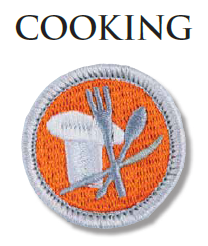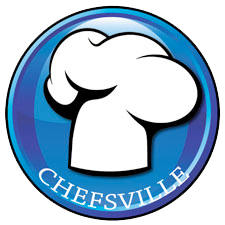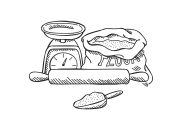Cooking Merit Badge Health & Safety
[text-box width=”100%” align=”center”]

[unordered title=”Areas of Study:”] [line]Health and Safety[/line] [line]Nutrition[/line] [line]Cooking Basics[/line] [line]Cooking at Home[/line] [line]Camp Cooking[/line] [line]Trail and Backpacking meals[/line] [line]Food related careers[/line] [/unordered] [/text-box] [div-line] [text-box]
Food Storage and Transportation Safety
Rules apply no matter where cooking takes place. All food must be stored at safe temperatures and cooked to proper temperatures to limit the risk of illness. Restaurants all follow these rules. These rules are for everyone.
Cross-contamination is the leading cause of food-borne illnesses is absolutely preventable by careful food preparation and good hygiene. Cross-contamination happens when harmful bacteria is spread from person to person, person to an object or object to person.
Protection starts with:
1) proper and frequent hand washing,
2) washing produce, and
3) keeping work surfaces clean.
Another important point is to check the dates on the food items such as cans or cartons.
There is the “sell by” date which helps stores know how long to they have to sell something.
Next up is the “best if used by (or before)” date that is recommended for best flavor and quality.
Then there is the “use by” date and the food manufacturer sets this date to show the last date of peak quality.
One or more of these dates are listed on the packaging, even eggs have these dates listed.
Always clean as you go. This habit will allow for an enjoyable cooking experiences. “Clean as you go” keeps the cooking area safer, helps prevent cross contamination and food-borne illness, helps you feel more organized and when you are done, it makes finishing a breeze. Start by having a damp cloth on one side of the cutting board, and a dry cloth on the other side. Also be sure you can get to the soap quickly. Wipe the surfaces as between preparing each dish. Immediately clean up spills from raw meats. Cut meats on a different area than raw vegetables. Put things back where they belong before going on to the next dish.
Mise En Place
The practice of having all of your ingredients and equipment together. This is another habit that you can develop to make cooking fun. Its no fun cooking something, then going off to find if you have something you need while your food starts to burn. Nobody wants to set out to ruin a dish. This habit will help you win 100% of the time when it comes to cooking.
“Clean, Separate, Cook, Chill”
Clean – be sure before you start that hands, surfaces and utensils at the ready.
Wash fruits and vegetables just before cutting them down or cooking them.
Clean counter space and cutting boards when moving from raw foods such as meat, poultry, seafood and eggs.
At Camp, use disposable wipes, treated water and soap nearby. Try to arrange a 3 area sink, 1) washing, 2) rinsing and 3) to grab for drying.
Separate: Keep raw eggs, meat, poultry, seafood and their juices away from ready-to-eat food.
Use a separate cutting board for each if possible, the color coordinated ones are fun to use.
Do not place cooked food back where raw food was taken. Place cooked food somewhere else, hopefully in a dish or tray for serving or for the next step in a recipe.
This is especially true “at camp”. Use sealed plastic bags and clean up any spilled juices quickly.
***Important – Raw marinates and rubs are for raw foods. Do not use marinates on cooked meat, poultry, or seafood. Cook the marinade first and use it as a sauce.
Cook – Use a food thermometer to be certain that meat, poultry, seafood, and egg products have been cooked to a safe minimum temperature. Color and texture are not reliable indicators of safely cooked foods.
While “At Camp” include a “food thermometer” on your equipment list.
Be sure you understand how to use the “food thermometer” correctly. Some are instant read while others are digital surface thermometers. Use in the thickest part of what you are cooking to get an accurate temperature reading.
Chill – There is a danger zone where bacteria grow quickly. This happens when the temperature is above 40°F and less than 140°F.
To keep us safe, our refrigerators are generally under 40°F and our freezers are about 10°F.
To keep everyone safe, food needs to be refrigerated or frozen as quickly as possible. When working with stews and soups, you want to place leftovers in zip-lock bags, and then use the freezer to cool them down. Lay the bags flat for maximum cooling and don’t place anything on top of them until they are frozen solid.
Place other foods that need to be stored in shallow containers, cover and then refrigerate. Generally, food will stay good for 2 days. Uncooked meats, poultry and fish can usually make it to 3 days in the refrigerator. Cured foods may be refrigerated for 5 days.
It’s always great when going to camp to have a nice big cooler. Blocks of ice will keep food much colder than ice cubes. Foil is a great way to keep food cold. Just place foil on the top of the foods. The shiny side will cause cold air to bounce back down into the food. Have a separate cooler for drinks since it is opened so often, all of the cool air gets out.
[/text-box] [div-line]


